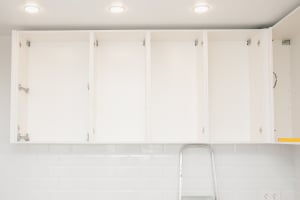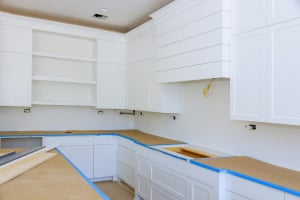Are your commercial doors rubbing or sticking when your clients are opening or closing them? Are they not closing all the way?
There are several ways to adjust your commercial doors, including adjusting the set screws, tightening the threshold screws, fixing bends in the thresholds, and checking the weatherstripping on your doors. Leaving your commercial doors unchecked can create security issues for your business, cause heat or air conditioning to escape, and cause damaging wear-and-tear on your doors.
While it’s typical for exterior commercial doors to sustain some damage or wear from weather and frequent use, it’s important to invest in high-quality doors to ensure your stunning doors maintain their integrity for as long as possible. If you need to replace your commercial doors, shop our stylish selection of office doors! 27estore offers a wide range of commercial doors using high-quality materials that are built to last.
STEPS TO ADJUSTING YOUR RUBBING DOORS
Whether the issue is the height of your office doors or a loose screw, it’s normal to adjust your commercial doors from time to time. All doors‒from wooden doors to doors that are fire-resistant‒can struggle with sticking. This can be due to issues with hinge alignment, improper installation, humidity causing the doors to swell, and usual wear and tear.
Luckily, there are a few steps you can take before diving into the more intensive solutions or door replacement. Here are a few things to try before calling in the professionals:
ADJUST THE SET SCREW ON THE TOP
If your commercial doors are rubbing on the top or bottom of the door, you can adjust the set crew that is on top of the door. There’s usually a single screw that sits on top of every commercial or storefront door that allows you to adjust the position of the door. Keep in mind it only allows you to adjust the door slightly up or slightly down, so adjusting this screw will only make minor changes to your door’s position.
To raise the door slightly, use a hand screwdriver and slowly tighten the screw clockwise. Be careful when tightening the screw, as extreme overtightening can cause the glass in glass doors to crack or break. To lower the door, use a hand screwdriver and slowly counterclockwise to loosen it.
TIGHTEN THRESHOLD SCREWS
If your door is mainly rubbing on the bottom, you can tighten the screws on the threshold to adjust the door. Thresholds typically come with three to five screws that can become loose over time. This is usually due to wear and tear, so you may need to make these adjustments every three to six months.
When these screws become loose, the threshold may rise and rub on the bottom of the door. To fix this, all you need to do is to inspect the screws on your threshold, checking for any that are loose. Then, with a hand screwdriver, slowly tighten the loose screws until the threshold sits tight to the floor.
FIX THE BENDS IN THE THRESHOLD
Another cause for rubbing on the bottom of the door can be warps or bends in the threshold. Just like with threshold screws, the thresholds themselves can suffer from wear and tear over time. If your threshold is slightly bent or warps, you can use a rubber mallet or hammer to strike the bend until it is flat.
However, thresholds are meant to waterproof your doorways. If your threshold is severely damaged or using the mallet does not flatten the threshold, it’s best to contact 27estore for a replacement. Our team can advise you on the best ways to install the threshold so that it is properly sealed.
CHECK WEATHERSTRIPPING
If the commercial door in question serves as a storefront door and isn’t closing, there may be obstructions, such as an issue with the weatherstripping or brush door sweeps. The majority of these doors have bottom brush door sweeps or padding to seal heat or air conditioning into the building and keep out the elements from outside. These features are generally mounted to the surface of the door and are adjustable.
Check the bottom of the door to make sure the brush sweep or other weatherstripping features are not too low on the door and causing friction on the ground. This can cause the doors to catch or stick. If the stripping is too low on the door, you will need to unscrew it and place it slightly higher on the door.













